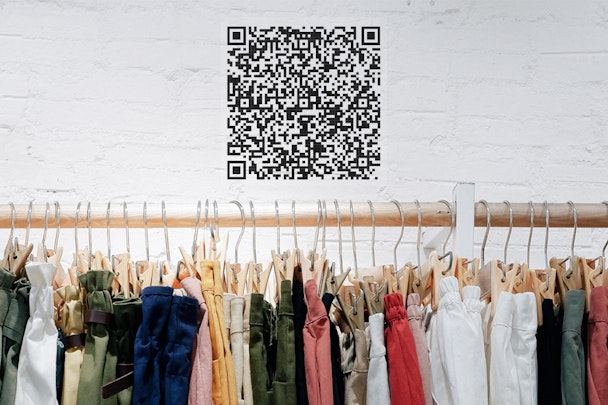Discovery and attribution: what’s driving Instagram’s new QR code push?
Instagram, like all social media platforms, is investing heavily in its e-commerce capabilities. But while its ambitions are forward-facing, it is also looking backward at an underappreciated marketing tool to supercharge those ambitions – the QR code.

The drive for e-commerce revenue has led to the reintroduction of the QR code across social
The QR code is having a renaissance. Once mostly seen in out-of-home (OOH) grassroots campaigns, the value of the code has skyrocketed as marketers grew to understand its wider implications for attribution and analytics purposes.
Instagram, finding itself on the back foot for e-commerce compared to platforms such as TikTok and Snapchat, is now quietly rolling out a new QR-based feature for all users. Following a limited trial of the tool, as noted by Alessandro Paluzzi, the platform is allowing its wider user base to share links to Reels and posts through the generation of a QR code.
A Meta representative told Techcrunch: “To make it easier for people and businesses to share specific content, we recently launched the ability to create QR codes for profiles, tags, locations, reels and more.”
It is another lease of life for the QR code. In 2015, Snapchat experimented with launching QR-based Snapcodes, allowing users to easily follow their friends. TikTok similarly launched its own visually-distinct QR code to allow users to share their own profiles.
The tool has also previously seen use in marketing in print titles. South Africa’s Associated Media – which publishes the regional editions of Cosmopolitan among others – saw positive results from printing QR codes next to products in its print magazines. That allowed its brand partners to track the purchase funnel from an analog product to a digital one with much greater specificity than would otherwise have been possible.
At the time, Associated Media’s chief exec Julia Raphaely said: “We started with a QR code because, in South Africa, that is the payment gateway that’s very well recognized. We partnered with a QR code technology that was powered by a bank, and we started testing it.”
In the rest of the world, however, the QR code was seen mostly as a tool that had never lived up to its potential. Now, though, audiences have greater familiarity with codes for information-sharing and linking out. In its most recent Marvel series, for instance, Disney has included QR codes within TV shows that take users to bonus content.
A social strategy
Now, however, the QR code has come roaring back to the fore as a viable marketing tool. On social platforms, as in print, the codes are being used to open the purchase funnel for consumers – and to deliver greater measurement options for advertisers.
Jordan Lukeš, communications director at Emplifi, explains: “QR codes offer a wealth of opportunity for brands in terms of social-forward marketing. We know that influencer marketing is a huge hit with younger consumers especially. Just imagine how this could enhance the shopping experience – you could have QR codes connecting product info to posts where an influencer is wearing the item, or even include QR codes on physical clothing racks in stores.
“Not only does this create a phygital experience for the shopper, but it offers a new way for brands to drive and monitor their engagement in a way that can be traced all the way down to the bottom line.”
The codes would also aid with one of Instagram’s perennial issues – that of discovery. While more consumers are using platforms such as TikTok and Pinterest to seek out and discover recommendations, thus opening the purchase funnel for brand partners, Instagram has struggled to match their capabilities. This integration of QR code allows its creators to share their posts off-platform, which could help ameliorate that problem.
Beyond that, the key benefit for Instagram is one of attribution. The QR code allows for more direct and demonstrable measures of efficacy when it comes to linking through to advertising partners’ products.
Media Bounty’s Max Harris and Ali Moloney explain: “For advertisers, this trend has provided the added benefit of gathering audience data for future marketing purposes. For example, QR codes can store digital information such as when, where and how often you scan a code, which typically leads to an app or a website that then tracks your personal information. Therefore, the rise of the QR code follows the agreement between platforms and users as we exchange our data for access and convenience.”
The QR code was a victim of Amara’s Law, and its early use cases were arguably too early to take advantage of the rise of the smartphone camera and social media. With Instagram and the other major social platforms making huge strides toward developing their e-commerce operations, however, the QR code has again found its place in the marketer’s arsenal.

